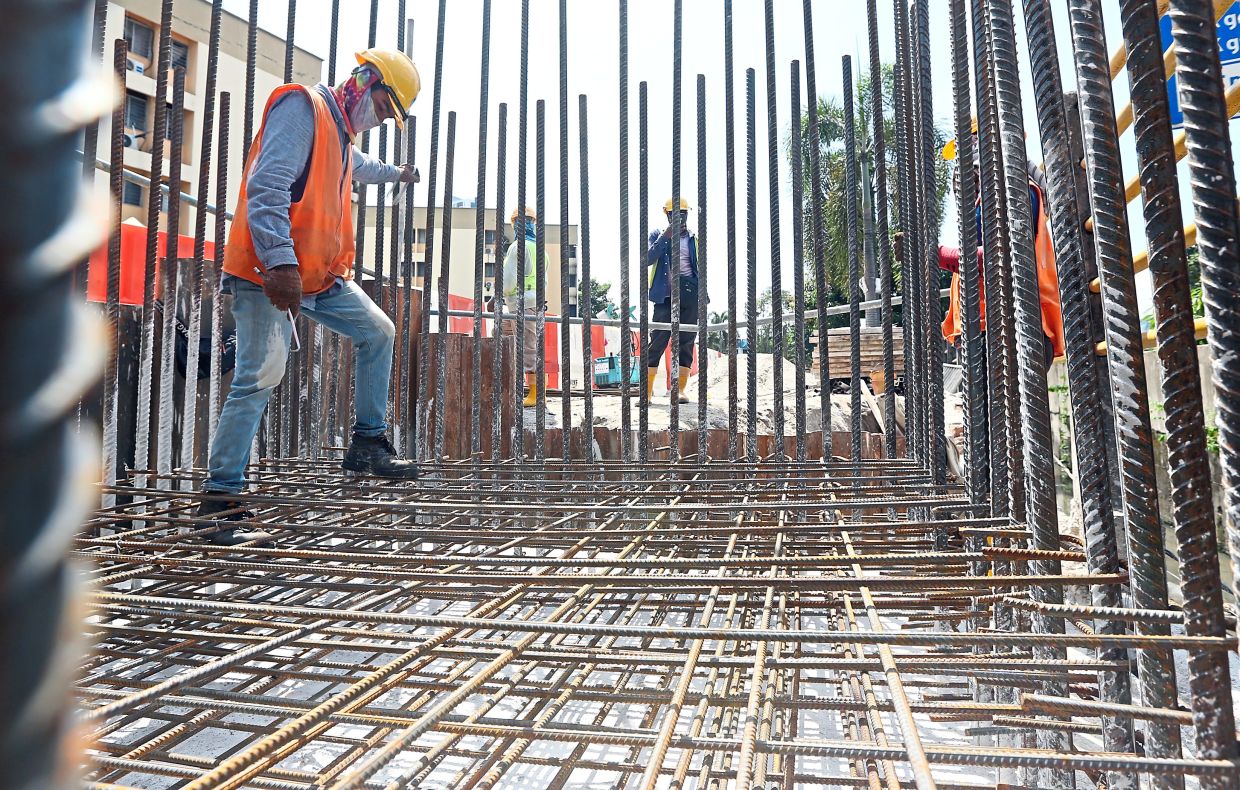
BUDGET 2021 will be presented at a time of uncertainty on revenue collections and continued high expenditure for 2021 leading to fiscal slippage. If the goal is to focus entirely on keeping the economy and domestic demand afloat, what should the Finance Minister do?
The Budget’s expenditure programmes, fiscal measures and initiatives should be targeted and prioritised to help the nation, economy and businesses as well as our workforce to reset, revitalise and recover from the pandemic.
The recovery from the sharp economic fallout inflicted by the Covid-19 pandemic continues, although there remains substantial uncertainty surrounding the strength and pace of that recovery.
The Budget’s priority is to cement a sustained economic revival and businesses sustainability, focusing on two-pronged initiatives and strategies.
> Immediate and short-term: Fiscal transfers, tax relief and fiscal assistance as well as incentives to targeted households and businesses so as to facilitate quicker recovery amid an occurrence of a third wave of virus.
The travel and tourism sector as well as small businesses should be given more supports (such as deferment of tax payments, service tax and tourism tax exemption) as they are the hardest-hit sectors and will take a longer time to recover and get back on firm footing.
> Medium-and long-term: Measures and initiatives to help domestic workforce and businesses, especially SMEs, develop new capabilities in digital technologies and set the stage for long-term growth.
The National Economic Recovery Plan and 12th Malaysia Plan (2021-2025) will also take on the medium and longer-term economic direction and policies.
The Budget 2021 can take the following measures and initiatives to:
a) Protect the vulnerable B40 households and affected sectors of society, boost purchasing power, revitalise domestic and foreign investment and create more jobs as well as improve income; and
b) Priority programmes and initiatives to accelerate the adoption of digital technologies, expand healthcare, industrial development, agriculture and entrepreneurship as well as the empowerment of women and youth. Micro-economic policies that promoting small enterprises, self-employment, multiple-skills, productivity, innovation and creativity must be explored in these challenging times.
1. Spending on multiplier and productive capacity expansion projects/programmes:
a) Fast-track spending on smaller socio-economic rural and community projects;
b) Expedite the implementation of ongoing and new public infrastructure projects (such as MRT2, Pan Borneo Highway, LRT3, Gemas-JB Double Track, ECRL, and Singapore-Johor Bahru RTS); and
c) Focus on investing in “new smart infrastructure” used for high-tech, digitalisation and sustainable purposes (renewable energy, climate change, eco-green). These include big data centres, 5G infrastructure and charging stations for new energy vehicles (NEVs), solar energy, healthcare.
2. Sustaining consumer spending via financial assistance to targeted households:
a) Tax free holiday for individuals (chargeable annual income between RM100,000 and RM150,000 below);
b) Reduction in personal income tax rate for middle-income earners;
c) RM100 e-wallet spending voucher for annual income below RM100,000. The online stores and participating merchants to provide a match in a form of discount vouchers that have to be spent in a stipulated time; and
d) Extension of RM30 public transport subsidy for another year to December 2021.
3. Support employment; create jobs and skill enhancement
a) Extend reskilling and upskilling programmes to end-Dec 2021;
b) Extend hiring and training as well as assistance for business to end-Dec 2021;
c) Promote job search through both public and private sector jobs portal;
d) Propose a screening to distinguish between people who may be relatively job ready and those who have more substantial impediments to employment;
e) Encourage youth involvement in agro-food and agriculture industry through high interest subsidy on agriculture loans and credit facilities; technical support on agricultural production; and
f) Creative co-sponsors to assist young start-up in digital technologies and data solutions to assist SMEs.
4. Ease 3Cs (cash flow, cost and credit) and reviving private investment
a) Extend the wage subsidy programme; utilities discounts; rental relief; increase the amount and enhance the terms and conditions of soft loan facilities for businesses and special grant for small enterprises to increase accessibility. Targeted loan repayment assistance must be greatly facilitated;
b) Enhance a conducive investment climate. Maintain a competitive tax structure and cost of doing business, transparent and liberal investment policies/guidelines;
c) Review company income tax rate: (a) Reduce company income tax rate to 22% from 24% for corporates in YA 2021 and further to 20% for YA 2022; (b) Reduce company tax rate to 15% from 17% for SMEs in YA 2021; (c) Provide tax rebate of 25% on corporate income tax payable up to RM15,000 to RM20,000 for YA 2020-2021; and
d) Design a “Reconstruct, Resilience, Reimagine Package” for micro and SMEs. The package comprises fiscal, monetary, financial, marketing, technology, digitalisation and automation, technical advisory, product and market development as well as human capital development.
5. Digitalisation and e-commerce
a) Expedite the implementation of RM21.6bil National Fiberisation and Connectivity Plan (NFCP) to improve broadband quality and coverage, reduce broadband prices and provide Internet access across all spectrums of society;
b) Provide double tax deductions for investment in upskilling and reskilling of employees in ICT;
c) Provide 100% capital allowance on purchase information and technology (ICT) equipment for YA 2021 and 2022;
d) Provide a double-tax deduction on developing e-commerce’s website or mobile apps;
e) Soft grants for digital marketing and training services online; incentives for employers to conduct online learning and e-learning; and
f) Measures to facilitate on-line business platform, namely, no charge for the first 1,000 transactions for Point-of-Sale terminal; lower the merchant Discount Rate (MDR) to 0.1%; lower MDR rates charged by e-Wallet; and Market Development Fund to fund the deployment of Point-of-Sale terminals.
This is the final part of a two-part commentary by economist Lee Heng Guie. Views expressed here are his own.

